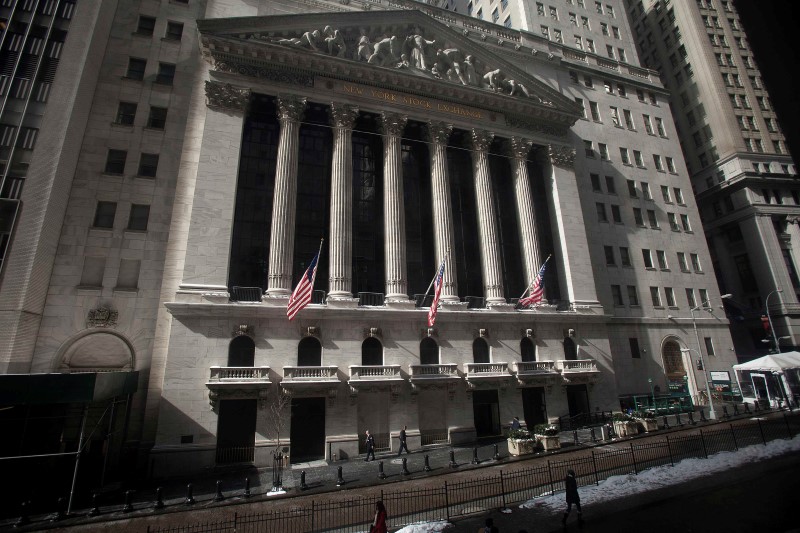This post was originally published on this site
https://i-invdn-com.akamaized.net/news/LYNXNPEB8S161_M.jpg
I’ve been one of many critics of the policy failures of the previous bailout. But let’s not forget that strong and effective oversight was one of the clear successes of the 2008 program — or the painful lessons it taught.
First, strings must be attached to funds handed out to businesses crippled by the fallout from the coronavirus pandemic, and vigorous independent oversight is necessary to ensure compliance with them. Otherwise there will be no way to achieve the policy goals that the bailout intends to accomplish.
There was a startling absence of any such strictures in 2008-2009. When the Treasury Department provided hundreds of billions of dollars to U.S. banks, it said that doing so would restore lending and provide relief to struggling homeowners. But it then refused entreaties to establish conditions that would assure such a result.
It was only the transparency brought through oversight (including an audit by the special inspector general’s office of the banks’ uses of funds) that made it clear that the banks did just about everything with their bailout money other than increasing lending or helping homeowners. While care must be taken to make sure that any conditions are not so onerous or unrealistic that they defeat the purposes of the bailouts themselves, smart, narrowly tailored requirements will be the difference between failure and success.
Second, although granting a certain amount of discretion to policymakers implementing the bailout is necessary to allow them to adapt to changing circumstances, giving them too wide a lane can lead to poorly thought out decisions. Examples from the financial crisis identified by the special inspector general and the other oversight bodies included backdoor bailouts conducted in secret and otherwise shielded from the taxpayers funding them. One of the worst lapses involved the bailout of American International Group’s Financial Products division, in which the government used taxpayer money to secretly pay off the failing insurance company’s Wall Street counterparties to the tune of tens of billions of dollars for securities worth less than half of what the government paid.
There’s also a danger now of picking bailout recipients based more on their political connections and the power of their lobbyists than the merits of their applications. Without the powerful disinfectant of sunlight provided by robust oversight, there is an intolerable risk that the disease of corruption will spread like the coronavirus itself.
Third, agencies will make significant mistakes as they roll out programs, and tight oversight will be needed to correct course given the reluctance in Washington to admit error. The Treasury’s programs to fulfill TARP’s mandate to help homeowners were an egregious example of how badly awry things can go. As originally implemented, they included policies that condoned predatory actions by the banks’ mortgage-servicing arms that left many homeowners worse off as a result of participating in the programs. Without scathing reports from the oversight bodies and subsequent congressional hearings, those rampant abuses — which Treasury had characterized as successes — would have continued unabated.
Similar revelations provoked by the oversight bodies helped reshape some poorly designed programs and kill others, avoiding what could have been hundreds of billions of dollars of losses. Without truly independent oversight arms, similar errors with potentially similarly devastating consequences will go unchecked.
Fourth, Congress should create a dedicated inspector general to keep an eye on the various aspects of the bailouts. That’s what it did in the last crisis, recognizing that an overtaxed inspector general already in place couldn’t possibly oversee such a massive bailout effectively. Three agencies were created to oversee the TARP program: The special inspector general, a congressional oversight panel and the Government Accountability Office.
The special inspector general’s office, an independent agency within the Treasury Department, was both an auditing body and a full-fledged law enforcement agency (think of a mini-FBI for the TARP program). It worked to ferret out and deter those who would seek to criminally profit off of a national crisis, and pushed Treasury to include anti-fraud provisions in its bailout programs to bring criminal efforts to the surface.
These efforts worked. The combination of robust enforcement and effective tripwires resulted in more than 350 convictions (including bank chief executives and other senior officers), $11 billion recovered, and minuscule losses due to fraud for a program of its size and scope.
Although fraud and scandal are inevitable in a bailout as sweeping as what is now being contemplated by Congress and the administration of President Donald Trump, it would be malfeasance not to include a robust, dedicated inspector general to limit waste, fraud and abuse and to investigate it when it occurs.
As Congress continues to debate the bailout, it is imperative that the lessons from the recent past be repeated. Strong policy-driven conditions, an independent inspector general with primary jurisdiction (an excellent candidate would be the special inspector general’s office for TARP, which is still in business and has plenty of bandwidth as its original mission wanes), and specified congressional oversight will go a long way toward doing so.
This column does not necessarily reflect the opinion of Bloomberg LP and its owners.
Neil Barofsky was the special inspector general of the Troubled Asset Relief Program from 2008 to 2011 and is the author of “Bailout,” his account of that experience. He is currently a partner at Jenner & Block LLP.
©2020 Bloomberg L.P.

